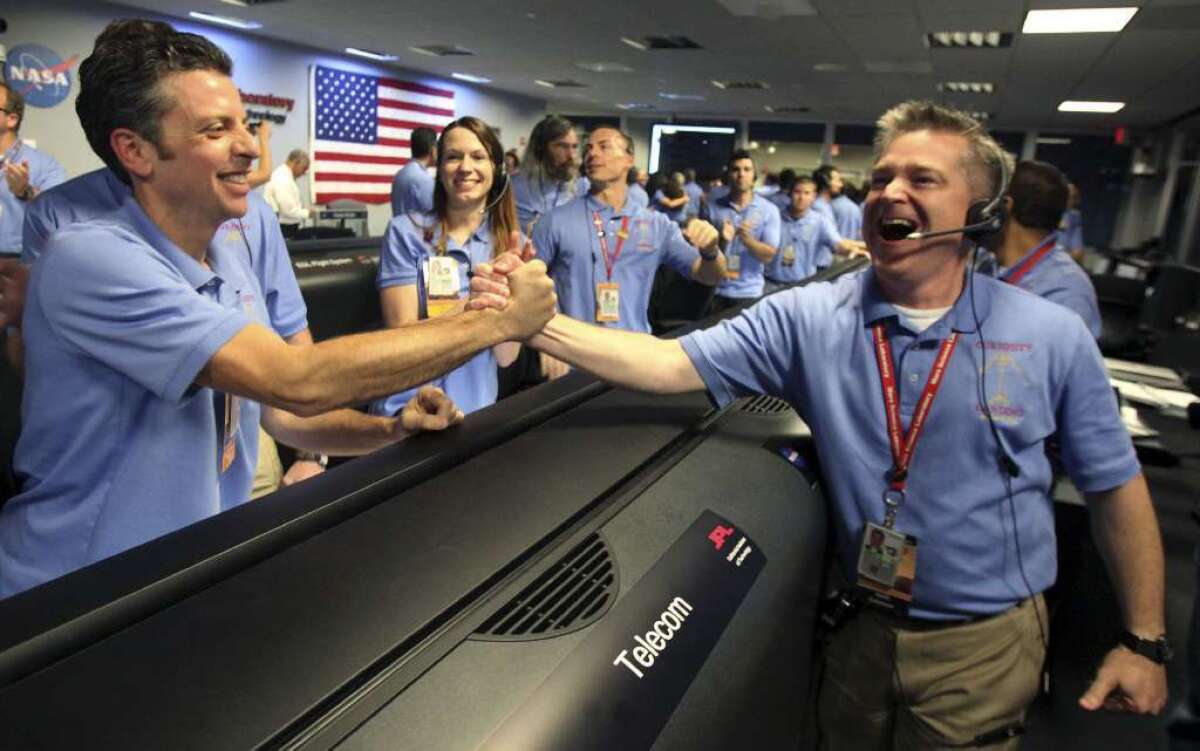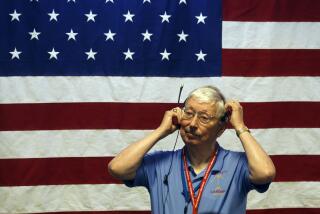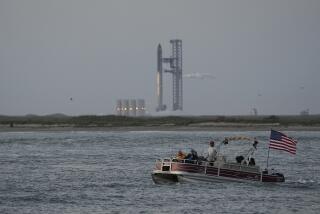Mars rover Curiosity safely lands on Mars

- Share via
Curiosity, the largest and most advanced spacecraft ever sent to another planet, stuck its extraordinary landing Sunday night without a hitch and is poised to begin its pioneering two-year hunt for the building blocks of life — signs that Earth’s creatures may not be alone in the universe.
Applause erupted across the campus of the Jet Propulsion Laboratory in La Cañada Flintridge and engineers inside mission control could be seen hugging and weeping with joy. Al Chen, an engineer on Curiosity’s entry, descent and landing team, said the words that space scientists had been waiting on for 10 years: “Touchdown confirmed.”
“We did it again!” another engineer shouted.
“We did it again!” another engineer shouted.
The landing site was 154 million miles from home, enough distance that the spacecraft’s elaborate landing sequence had to be automated. The Earth also “set” below the Mars horizon shortly before landing, making even delayed direct communication with mission control impossible — and confirmation of Curiosity’s fate tricky.
Engineers were waiting for a passing satellite, Odyssey, to relay a series of three messages from Curiosity. One would indicate the robot’s rough position and how hard it had landed; another would indicate that it was no longer moving; and a third would indicate that the spacecraft was emitting a continuous stream of communication.
If Curiosity’s success is confirmed, it would be a moment of triumph for NASA and the Jet Propulsion Laboratory, which is managing the $2.5-billion mission.
PHOTOS: History of Mars exploration
Curiosity is expected to revolutionize the understanding of Mars, gathering evidence that Mars is or was capable of fostering life, probably in microbial form.
The spacecraft is also expected to pave the way for important leaps in deep-space exploration, including bringing Martian rock or soil back to Earth for detailed analysis and, eventually, human exploration. President Obama has established a goal of sending astronauts to Mars in the 2030s — and John Grunsfeld, NASA’s associate administrator, said on Sunday that humans might one day live there too.
“Curiosity has captured the imagination of the world,” Grunsfeld said before the landing. “We’re about to do something that I think is just huge for humankind.”
INTERACTIVE: Curiosity, from liftoff to landing
A six-wheeled, nuclear-powered geochemistry laboratory, Curiosity is the size of a small car — five times heavier and twice as long as previous Mars rovers. It is equipped with a suite of powerful instruments, including 17 cameras, lasers and a radiation detector. The rover can bore into rock and ingest samples, drawing them into an on-board chemistry lab and then sending the lab results home.
The primary mission is expected to last for at least one Martian year, or 687 Earth days.
Previous NASA missions have found evidence that Mars, now a cold and dry planet, had a warmer, watery past, so much so that scientists think of it as Earth’s space cousin. Every environment on Earth that contains liquid water also sustains life. Curiosity will search for the other building blocks of life, particularly carbon-carrying organic molecules.
“Mars looks like it has been habitable,” said Michael Meyer, a leader of NASA’s Mars Exploration Program. “But you need to go and look.... And Curiosity is the rover that is able to do that.”
Other than the decision to send the robot to Mars in the first place, the choice of a landing site was probably the most important issue scientists faced.
For five years, space scientists made impassioned arguments for their favored site. Last summer, from a pool of 60 candidates, NASA and JPL decided to send Curiosity to Gale Crater, an ancient geological feature just south of the equator, caused when a meteor slammed into Mars 3 billion years ago.
Gale Crater won out largely because of an enormous mountain in its center. Dubbed Mt. Sharp in honor of noted Caltech geologist Robert Phillip Sharp, the mountain is three miles high. That’s taller than any mountain in the “lower 48” of the United States, and taller than some portions of the rim of the crater that encircles the mound.
NASA’s Mars Reconnaissance Orbiter, a satellite that launched in 2005, has found that the mountain’s slopes contain distinct layers — clay at the bottom, an apparent remnant of Mars’s watery past, a layer of sulfates on top of that, and layers of sand and dust toward the top.
Similar to the way the walls of the Grand Canyon offer a layered view of the evolution of North America, space scientists believe Mt. Sharp’s slopes contain a preserved record of Mars’s past.
Caltech’s John Grotzinger, Curiosity’s principal investigator, said the rover “will have started the era of a whole new dimension of space exploration.” That dimension, he said, is one of “deep time.” Rather than getting a snapshot of one point in time on Mars, the mountain will allow Curiosity to build an understanding of “hundreds of millions to even billions of years,” Grotzinger said this weekend as JPL ramped up for landing.
Curiosity will climb the lower portion of the mountain to investigate the makeup of the layers of soil.
Much of the discussion about Curiosity as it approached Mars focused on its complex landing sequence. In a matter of minutes Sunday night, the spacecraft needed to change form five times — using a massive parachute, a “backpack” of reverse-thrust engines and a contraption known as a “skycrane” to reach the surface.
The unusual sequence carried huge benefits, namely allowing scientists to be far more particular about where Curiosity would land. JPL Director Charles Elachi called it a “quantum jump,” and said it was akin to flying a rocket from Cape Canaveral, Fla., to the Rose Bowl — and then not only landing in the stadium, but landing on one pre-selected seat.
Because the landing site is so far away, a message sent from the rover takes 14 minutes to get home. The landing sequence took seven minutes — which meant that by the time scientists received a message that the spacecraft had entered the Martian atmosphere Sunday night, it had already been on the surface for seven minutes. NASA dubbed this period of the mission “seven minutes of terror.”
Now, scientists can take their time. Ensuring that all of Curiosity’s instruments are working in proper fashion will take weeks. The rover is not expected to begin driving until early September, and will likely begin “scoop” samples several weeks later. Curiosity is expected to begin drilling into rocks later in the fall.







